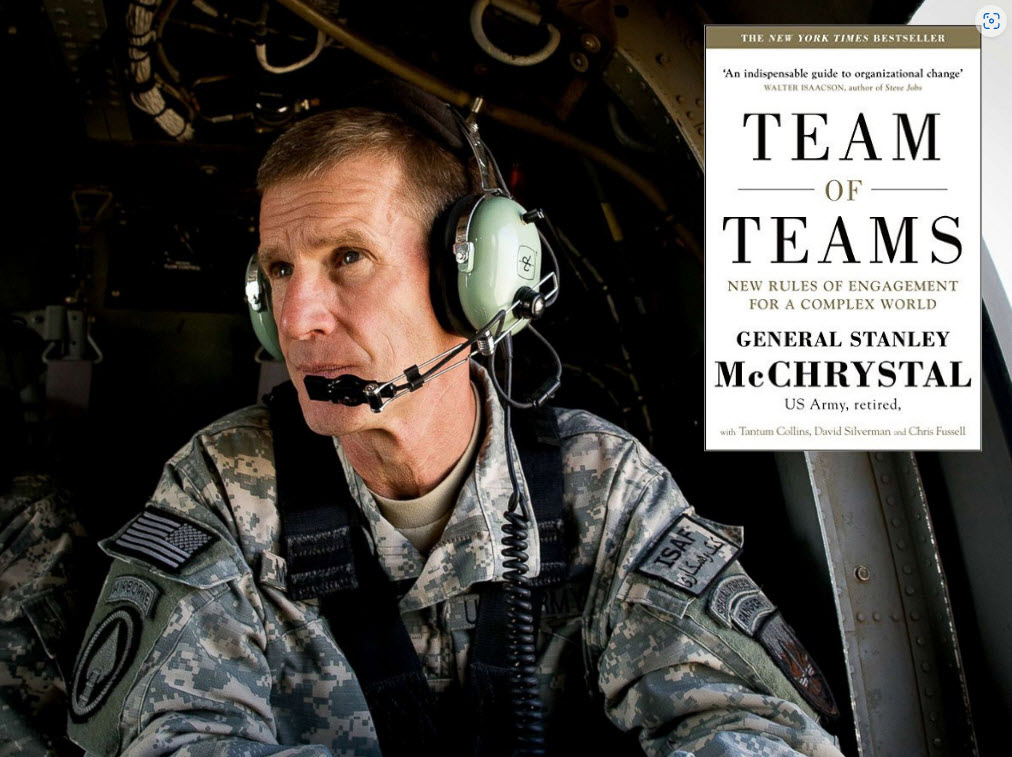From General McChrystal’s book Team of Teams, I learned about Bill Drayton, former McKinsey consultant and founder of Ashoka. Ashoka is the world’s largest global network of social entrepreneurs. Drayton may have been the first to experiment with what McChrystal called a ‘team of teams,’ or a ‘constellation of teams,’ according to Drayton.
Drayton became convinced that the traditional organizing model, a hierarchical command and control structure, do not always serve us or the problems we seek to address. “Amidst growing complexity,” he wrote, “how will individuals and entities need to organize to solve complex social problems and thus remain competitive and relevant?” according to his article on Forbes.
Drayton: “There is an intrinsic failure in this old way of organizing: the well-defined structures we work so hard to create end up focusing on the success of the structure (on whether responsibilities and roles are well defined, and whether individual teams are delivering on what they are supposed to deliver); rather than on whether the structures were ever organized to overcome the challenge at hand in the first place. How could we ever be expected to succeed?”
After decades of raising dikes in the Netherlands, the Dutch departed from the notion that nature can be commanded and controlled. Instead, our new approach is to make Room for the River, allowing access water to flow into floodplains. This is about building resilience: taking a punch without breaking and bouncing back with vigor. Regardless of the structure’s fortification, it will eventually break under pressure.
In a later article by Meehan III c.s., described the model as follows: “At the center of this constellation is a coordinating executive team, but the composition of each project team shifts as needed over time. Teams and team members work together in fluid, constantly changing ways. The model emphasizes decentralized autonomy, meritocracy, and a sense of partnership.”
Ashoka’s transition to this organizational model reflects another critical insight: the real work of change in today’s world happens not through isolated acts of visionary entrepreneurship but within teams of people who each have a critical contribution to make.
This notion is confirmed by Harvard’s Heidi Gartner, who suggested: “Today, the vast majority of innovation and business-development opportunities lie in the interfaces between functions, offices, or organizations. In short, the integrated solutions that most customers want but companies wrestle with developing require horizontal collaboration (across the functional silos).” In a traditional, siloed organization, innovation falls between the cracks, hampered by the silo walls.
The case for replacing the slow and cumbersome decision-making process inherent to hierarchical structures became apparent in the book Team of Teams. General McChrystal’s decision to create a team of teams, distributing power across the organization to allow critical information to pass through the teams, proved life-saving when facing Al Qaida in Iraq.
The two approaches in summary:
Traditional Team Design (fragile):
- The team (and its members) is static, rigid, and fixed.
- The team is primarily defined by its function and responsibility.
- A few people in leadership roles manage the vast majority.
- Individuals succeed by mastering a skill and repeating it.
Team-of-Teams Design (antifrigile):
- The team is evolving and fluid; members come and go as the nature of the problem changes.
- The team is primarily defined by an objective that is bigger than any team could achieve single-handedly.
- There is very little hierarchy; leadership, decision-making, and execution are decentralized but coordinated among team members.
- Team members succeed by taking agency to enable change in any context. Successful team members are changemakers.

The book Team of Teams, combined with the work by Ricardo Semler, lays the foundation for our distributive leadership model, ConSentricity.










